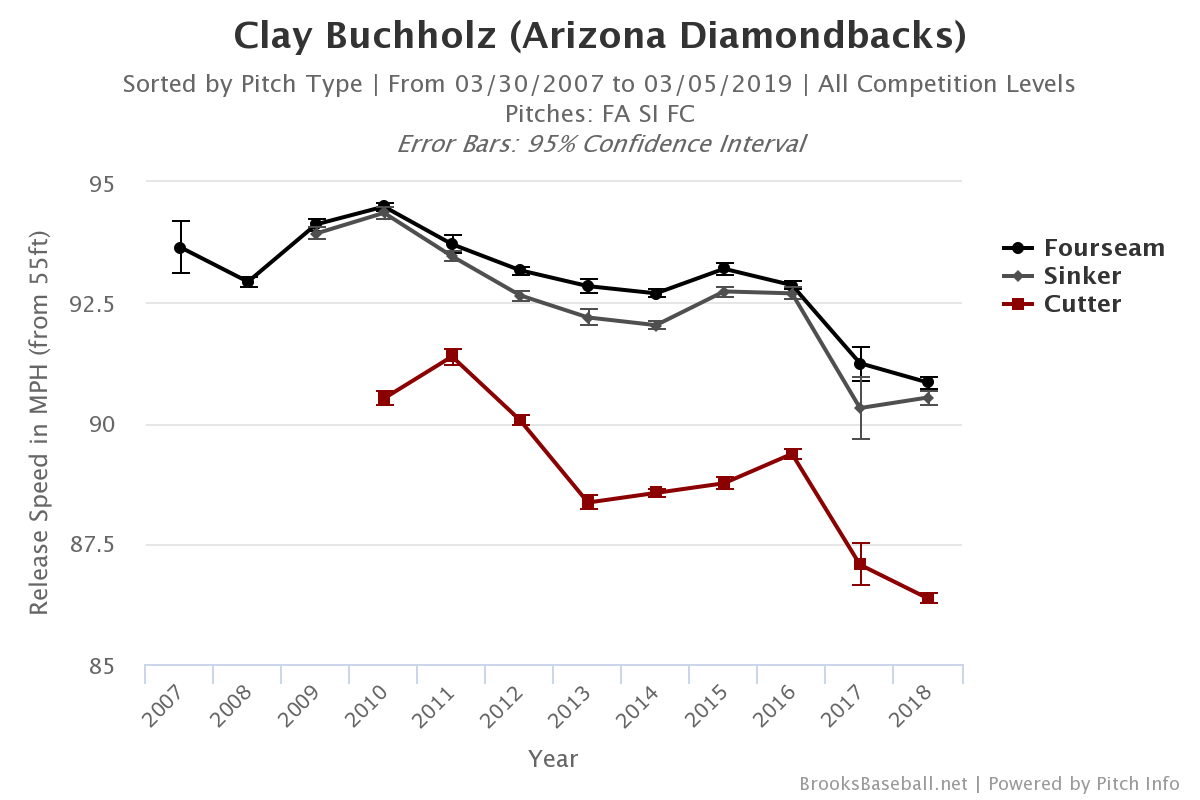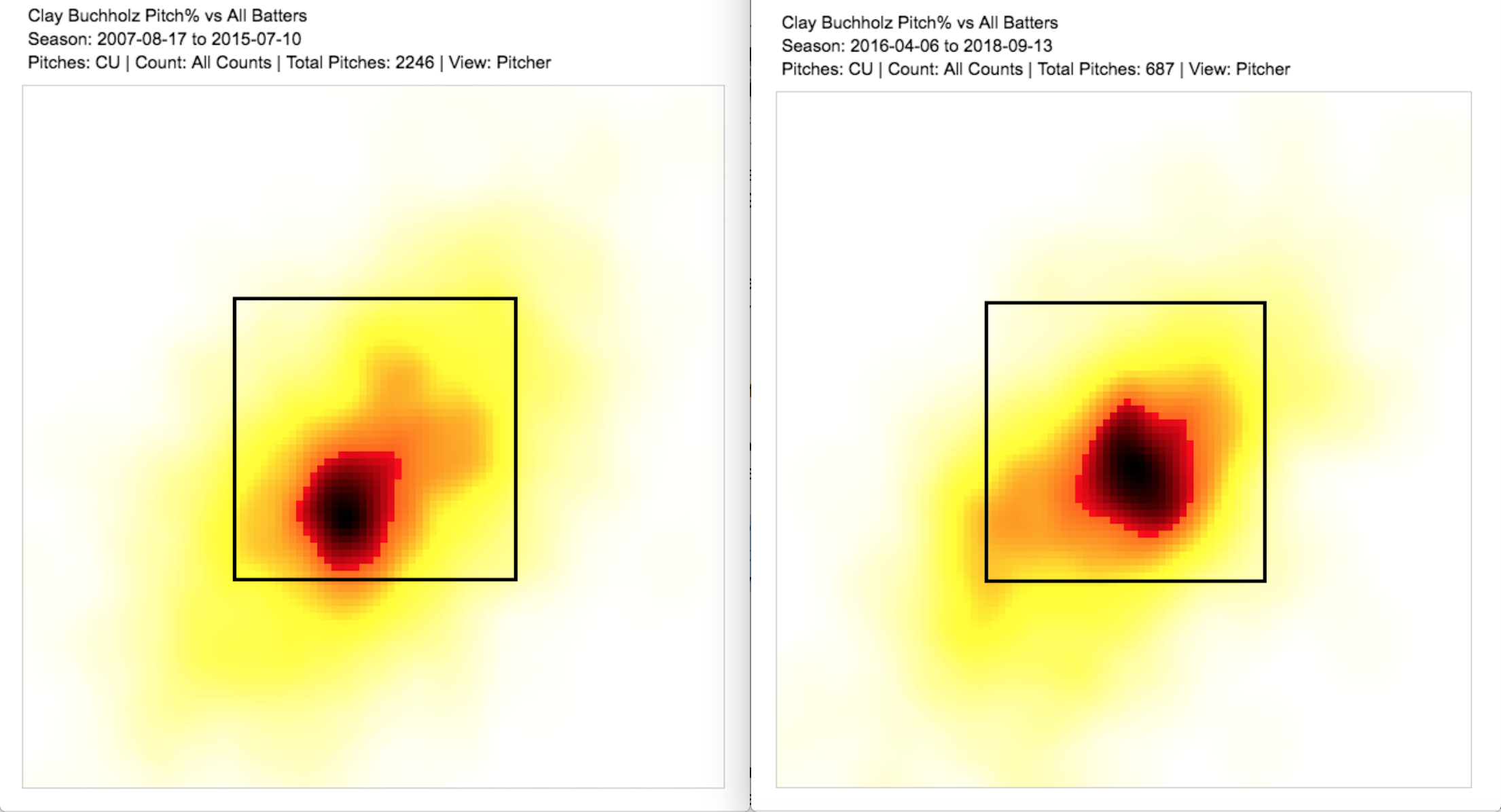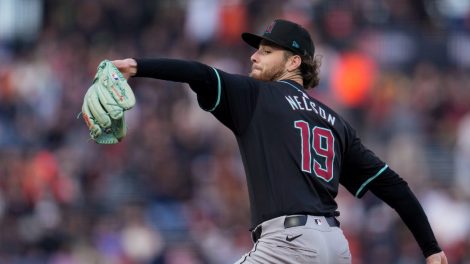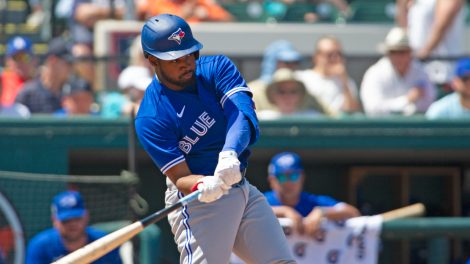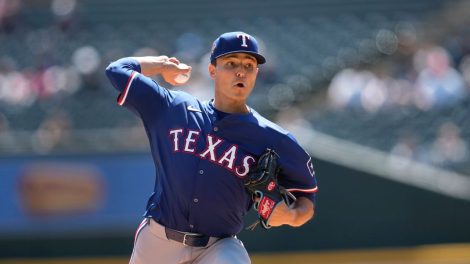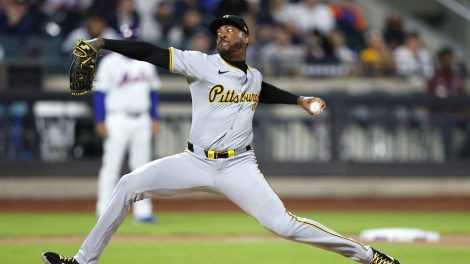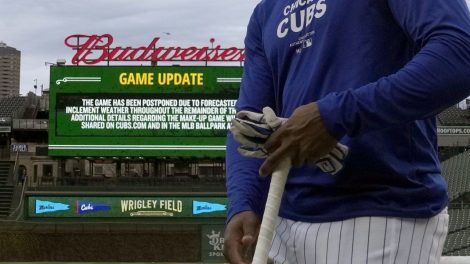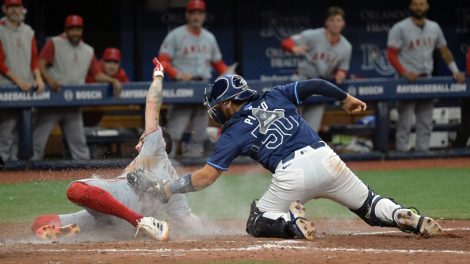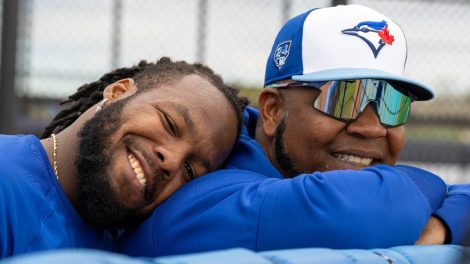DUNEDIN, Fla. — Last April, as he prepared to make his first start of the 2018 season, Clay Buchholz pulled on the navy-and-cardinal uniform of the Northwest Arkansas Naturals and wondered how he’d ended up back in double-A.
"I think 2008 was the last time that I was in the minor-leagues," he said Tuesday, after signing a one-year, $3-million deal with the Toronto Blue Jays. "It was definitely humbling."
Buchholz was there because, like so many other veteran players populating baseball’s free-agent middle-class, 30 MLB teams had decided to go on without him. An 11-year veteran with two all-star games, a no-hitter and a World Series on his CV, Buchholz lost all but two starts of his 2017 season to injury, and spent the subsequent winter, his first as a free agent, waiting for a call. He waited an awfully long time. In late March, only 10 days prior to the beginning of the regular season, he finally caved and accepted what he could get — a minor-league deal.
It was with the Kansas City Royals, a tanking team that was trying to lose, and ended up rather successful at it, finishing with a 58-104 record, second-worst in MLB. Even they wouldn’t give Buchholz an opportunity. The Royals sent him to Northwest Arkansas. And after that, to the triple-A Omaha Storm Chasers. Buchholz allowed only two runs over 16 innings with those two teams, before he exercised a May 1 opt-out in his contract in order to pursue a major-league opportunity elsewhere.
Three days later, he signed with the Arizona Diamondbacks, a club run by old friends from his Boston Red Sox days, such as general manager Mike Hazen and manager Torey Lovullo. A couple weeks later, the Diamondbacks gave him his first chance to pitch in the majors in more than a year. And four months, 16 starts, and 98.1 innings after that, Buchholz finished his 12th MLB season with a 2.01 ERA.
[relatedlinks]
But even after proving he’s a more-than capable big-league starter with Arizona and re-entering the free agent market, Buchholz’s 2018-19 off-season was similar to his last — a lot of waiting. Although "a handful" of teams showed interest early on, Buchholz eventually told his agent not to bother him until there was a major-league pact on the table. Like many players his age, he found the offers he was getting were all remarkably similar in both term and dollars.
"Yeah, that’s how it’s gone the last couple of years. It’s a little weird. But it is what it is. I’m not going to hate on anybody. I was just searching for an opportunity to pitch again, and I found it here," he said. "The game’s changed a lot over the last six, seven years. You have all these young, talented guys coming up that are probably just as good, if not better, than the older guys. It’s something that you have to sit back and think about as a player. I don’t feel like I’m old. But, in this game, 34 is sort of old now.
"There was a couple times the last two years where I thought it might be over. I had a good run. But I wasn’t ready to be done playing by any means. So, I’m glad we got this figured out here."
There are caveats to Buchholz’s remarkable 2018 performance, of course. His BABIP (.255) and strand rate (86.6 per cent) appear unsustainable, and fielding-independent statistics (he posted a 3.47 FIP and 4.01 xFIP) suggest Buchholz benefitted from good fortune on balls in play. His wOBA against (.269) was 30 points lower than what would be expected (.299 xwOBA) based on the quality of contact he allowed.
But it’s still a results business, and Buchholz allowed two earned runs or fewer in 15 of his 17 outings last season. He walked more than two only once. He kept the ball in the yard (0.82 HR/9), posted his highest strikeout rate since 2015 (7.4 K/9), and provided a higher wins above replacement (1.9) than Jon Lester and Madison Bumgarner. He was undeniably good. Which is why he was determined not to sign another minor-league deal.
[snippet id=3305549]
"I did the whole minor-league thing last year and had to swallow a little bit of pride to do that. I’m glad I did it. It worked out for me in the end. It made me a better pitcher to go through that all over again," Buchholz said. "But it was just slow. The last two years have been slow in the off-season. And as a player, sometimes it’s hard to cope with that."
Still, Buchholz found positives in his minor-league stint, one being an improvement in his pacing, as he was forced to adjust to the presence of a pitch clock constantly blinking over his shoulder. That helped Buchholz stay in rhythm and keep his time between pitches to a minimum. He averaged 29 seconds between pitches during his brief 2017 campaign with the Philadelphia Phillies. But with the Diamondbacks, he got that number down to 26.5, much closer to the 26.1 he’s averaged over his career.
He also continued a recent overhaul of how he uses his five-pitch repertoire. Earlier in his career, when he was an all-star with the Red Sox, Buchholz leaned on a hard-at-the-time fastball that sat from 93-94 m.p.h. and touched 98. He mixed in an array of secondary offerings to keep hitters off balance, sinking and cutting his fastball, flipping up slow, big-breaking curveballs, and working in low-80’s change-ups.
But that was then and this is now. Buchholz’s fastball averaged 90.8-m.p.h. last season and the hardest one he threw all year was 93.9. In a league where the average fastball is approaching 94-m.p.h., Buchholz can’t blow his heater by hitters like he once did. As he’s lost velocity, the 34-year-old has prioritized his command and sequencing, focusing on throwing his pitches with movement towards the edges of the strike zone.
"I throw all the same pitches — they just don’t come out quite like they used to," he said. "It was a sort of look-in-the-mirror moment for me — trying to figure out how to evolve and do it with stuff that’s a little diminished but still quality."
Over the last several seasons, Buchholz has relied more and more on his 85-86-m.p.h. cutter as a pitch he can throw to any hitter in any count. Last season was the first of his career that he’s thrown more cutters than four-seamers, and that’s almost certainly going to be the case again in 2019.
It’s been an incredibly successful adjustment. The pitch generated a swing-and-miss 19 per cent of the time last season, as hitters chased just under half the cutters he threw outside the strike zone. He earned a strike with the pitch a remarkable 73 per cent of the time he threw it. Opposition batters put up only a .266 wOBA against it. Of the 22 times it was put in play for a hit, 17 were singles. A hitter hasn’t taken Buchholz’s cutter deep since 2016. It may be the biggest reason he’s still a viable MLB starter.
"Everybody throws 100 miles per hour now, it seems like. So, I think the 88s to 92s might be a little bit under hitting speed now," he said. "I try to use each pitch I have in my arsenal to set up one another, and just try to stay out of the middle of the plate. And it’s easier to do that without throwing max effort — bumping down to 90 per cent instead of trying to throw every pitch 115 per cent. I’ve learned from that. That’s how I treated every pitch that I threw last year."
Buchholz’s curveball still profiles as a potent weapon, as well, provided he locates it where he needs to. Buchholz threw the pitch with an average spin rate of 2,294 revolutions per minute in 2018, which ranked among the top 20 per cent of pitchers in the majors. But he’s left it up over the heart of the plate far too often in recent years, which has led to hitters producing wOBA’s of .372 or higher each season since 2016.
If the Blue Jays can help Buchholz locate his curveball closer to the bottom of the zone more consistently, it could become much more effective. Note the difference below in where Buchholz was locating his curveball through the first 9 seasons of his career (left) and where he’s been locating it since (right).
With spring training nearly half over, Buchholz will spend the coming weeks catching up on lost time. The Blue Jays intend to stretch him out as a starter, but he’ll essentially be beginning his build-up from scratch. For that reason, he may not be ready to open the season in Toronto’s rotation. A spell pitching out of the club’s bullpen is also a possibility.
"I’ve done both. I don’t count anything out nowadays," Buchholz said. "I’m here to help any way I can."
As always, health will be a factor. Buchholz has dealt with a number of injuries throughout his career, and 2018 was no exception. He missed a month mid-season with an oblique strain, and was shut down in September due to a flexor strain in his right elbow, a similar injury to the one that required surgery and limited him to only two starts in 2017.
But Buchholz says he’s healthy now, and attributes his issues at the end of 2018 to fatigue from missing almost the entire season prior. More than anything, he’s just happy to have a major-league job again. And another opportunity to pitch in baseball’s toughest division.
"I’m not scared to pitch in Fenway Park. I’m not scared to pitch in Yankee Stadium. For some guys, especially younger dudes, it’s a different animal pitching in those ballparks," Buchholz said. "It’s fun. I’ve pitched in Toronto a lot throughout my career. Coming back to the AL East, it’s going to be a little different this time around. There’s a handful of teams in the division that have a chance to win every night. You’ve got to be on top of your game and there’s not going to be any gimmies in this league. I’m excited for it."


